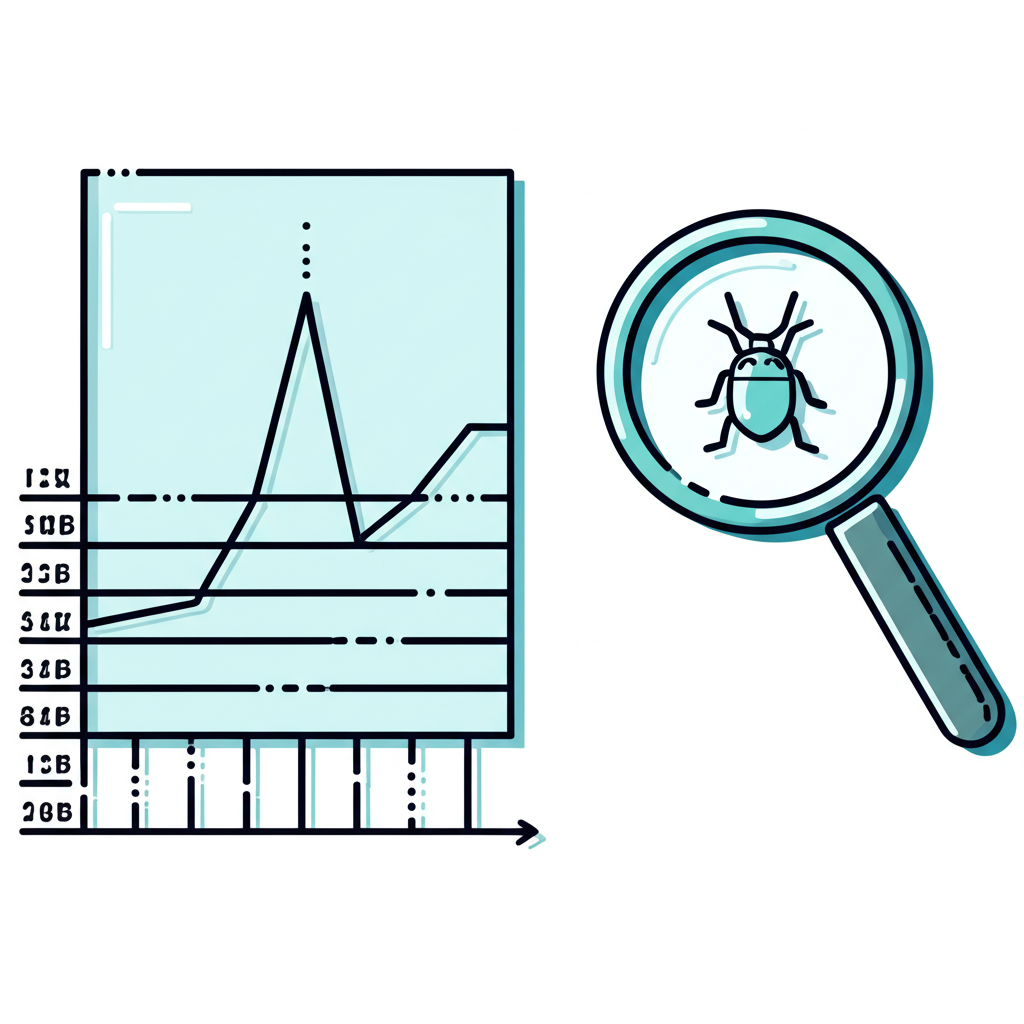
Tick Size Explained: 7 Key Impacts on Your Trading & Market Efficiency
Table of Contents
ToggleIntroduction: What Exactly is “Tick Size”?
In the fast-paced and highly structured world of financial markets, precision isn’t just a goal—it’s a requirement. One of the most foundational yet frequently overlooked components of this precision is the “tick size.” Though the term may sound technical or even obscure at first, it plays a central role in how prices are set, how trades are executed, and how profits and losses are measured. At its essence, tick size represents the smallest possible increment by which a financial instrument’s price can move. Whether you’re trading stocks, futures, or forex, every price change you see—no matter how small—is bound by this invisible grid of minimum movement.

Understanding tick size is more than just knowing a market rule—it’s about grasping the underlying mechanics that shape liquidity, spreads, and trading behavior. A stock might jump from $45.00 to $45.01, but never to $45.005, because its tick size restricts movement to one cent. This seemingly minor detail has ripple effects across the entire trading ecosystem. For active traders, algorithmic systems, and even long-term investors, tick size quietly influences execution quality, cost efficiency, and strategy viability. This guide will unpack the concept in full, separating financial reality from linguistic confusion and revealing how this micro-level detail shapes macro-level market dynamics.
Clarifying the Confusion: “Tick Size” in Finance vs. Entomology
Before diving into trading mechanics, it’s worth addressing a common point of confusion: the word “tick.” Outside of finance, “tick” most often refers to the tiny parasitic arachnid known for latching onto hosts and transmitting diseases. In that context, “tick size” might spark questions about physical dimensions, feeding stages, or species identification. Search results for biological ticks often include inquiries like “How big is a tick after feeding?” or “What does a tick look like on skin?”—valid concerns for hikers, pet owners, or medical professionals.

However, in the context of financial markets, “tick size” carries a completely different meaning. There’s no relation to blood-sucking pests—only to price increments. The term “tick” in trading likely originated from the audible “tick” sound early ticker tape machines made when recording price changes. Over time, the word evolved to represent the smallest movement in an asset’s quoted price. While both definitions exist, this article focuses exclusively on the financial interpretation. The biological curiosity is real, but irrelevant to how markets operate. Our exploration centers on market structure, trading efficiency, and the technical foundations that keep price discovery orderly and transparent.
The Core Concept: Defining Tick Size in Financial Markets
At the heart of every financial exchange lies a system designed to bring buyers and sellers together efficiently. A key component of that system is the tick size—the smallest allowable change in the price of a security, commodity, or derivative. Think of it as the market’s resolution setting: just as a high-definition screen reveals fine details, a smaller tick size allows prices to adjust in minute steps, enabling tighter alignment between supply and demand.

For example, if a stock trades with a tick size of $0.01, its price can rise or fall in one-cent increments: $25.30 → $25.31 → $25.32. It cannot move by half a cent unless the exchange permits sub-penny pricing, which is rare and often restricted. This standardization prevents chaotic or arbitrary pricing and ensures that all participants operate under the same rules. Without a defined tick size, the order book would become fragmented, with bids and offers scattered across infinitesimally close levels, making execution unpredictable and increasing the risk of errors.
Different markets adopt different tick sizes based on the asset’s price level, volatility, and average trading volume. Highly liquid stocks on major exchanges like the NYSE or Nasdaq typically use $0.01, while lower-priced or less-traded securities might have wider ticks. Futures contracts, such as those for the S&P 500 or crude oil, define their tick sizes in terms of index points or per-barrel values. The goal is always the same: to balance precision with practicality, allowing markets to function smoothly without unnecessary complexity.
Tick Size vs. Tick Value: Understanding the Key Difference
One of the most common misunderstandings in trading is the confusion between “tick size” and “tick value.” While they’re closely related, they serve entirely different purposes—and mixing them up can lead to serious miscalculations in risk and reward.
Tick size is purely about price granularity. It answers the question: “By how much can the price move?” For example, a futures contract might have a tick size of 0.25 points. That’s the smallest change allowed—no more, no less.
Tick value, on the other hand, translates that price movement into real monetary terms. It answers: “How much money do I gain or lose per tick?” This depends not only on the tick size but also on the contract’s multiplier—the amount of underlying value each point represents.
The formula is straightforward:
Tick Value = Tick Size × Contract Multiplier
Take the E-mini S&P 500 futures contract (ES) as a case in point:
- Tick Size: 0.25 index points
- Contract Multiplier: $50 per index point
So, the tick value is 0.25 × $50 = $12.50. Every time the contract moves by 0.25 points, a trader gains or loses $12.50 per contract. If the price jumps by a full point (four ticks), that’s a $50 change. For someone trading multiple contracts, these increments add up quickly—making tick value a critical input for risk modeling and position sizing.
Another example: Crude oil futures (CL) have a tick size of $0.01 per barrel. With each contract representing 1,000 barrels, the tick value is $0.01 × 1,000 = $10.00. A one-tick move means a $10 profit or loss per contract.
Understanding this distinction helps traders avoid underestimating exposure. A small tick size might suggest minor price swings, but when combined with a high multiplier, the financial impact can be substantial. Always check the official CME Group’s E-mini S&P 500 Futures Contract Specifications for accurate details before trading any instrument.
How Tick Size Impacts Trading and Market Structure
Tick size is far more than a technical footnote—it actively shapes how markets behave. From the width of bid-ask spreads to the strategies traders employ, its influence runs deep. Changes in tick size can shift the competitive landscape, alter profit margins, and even redefine what types of trading are viable.
Liquidity and Bid-Ask Spreads
One of the most direct effects of tick size is on market liquidity. A smaller tick size allows market makers and liquidity providers to quote tighter spreads. For instance, if a stock has a $0.01 tick, the spread might be just one cent ($50.00 bid, $50.01 offer). With a larger tick, say $0.05, the minimum spread widens, increasing trading costs for everyone. Narrower spreads mean lower transaction costs, which encourages more trading activity and attracts additional market participants. This creates a positive feedback loop: tighter ticks → tighter spreads → higher volume → greater liquidity.
Trading Strategies and Order Book Dynamics
Different trading styles are sensitive to tick size in distinct ways:
- High-Frequency Trading (HFT): HFT firms rely on speed and precision to profit from tiny price discrepancies. Smaller tick sizes create more pricing levels, increasing the number of potential arbitrage opportunities. As a result, HFT activity often intensifies in markets with fine granularity.
- Market Makers: These participants earn the spread between bid and ask prices. With smaller ticks, their potential profit per trade shrinks, forcing them to rely on higher volume or faster execution to maintain profitability. This increases the importance of low-latency systems and efficient order routing.
- Retail and Institutional Traders: Smaller ticks allow for finer control over trade execution. Traders can place limit orders closer to the market price, improving fill quality. It also affects the depth of the order book, creating a more granular ladder of bids and offers, which can aid in price prediction and execution planning.
Market Efficiency and Price Discovery
An optimally set tick size supports efficient price discovery—the process by which market prices reflect all available information. If ticks are too large, prices may “jump” over fair value, leading to mispricing and missed trading opportunities. If too small, the benefits may be offset by increased message traffic, system strain, or “pennying,” where traders continuously undercut each other by the smallest increment to gain queue priority.
Regulators closely monitor these dynamics. The Federal Reserve, for example, has published research on the relationship between tick size and market efficiency, examining how different increments affect transparency, competition, and overall market health. The goal is not to minimize tick size at all costs, but to find the sweet spot that promotes fairness, efficiency, and resilience.
Tick Size Across Different Financial Instruments
While the principle of tick size applies universally, its implementation varies widely across asset classes. Each market tailors its pricing structure to the unique characteristics of its instruments, from volatility and contract size to average trading volume and participant behavior.
Stock Market Tick Size
In the U.S., most stocks trade with a standard tick size of $0.01. This shift to decimalization in 2001 replaced the old fractional system (eighths or sixteenths of a dollar), significantly reducing spreads and improving transparency. However, not all stocks follow this rule. As part of a broader effort to study market structure, the U.S. Securities and Exchange Commission (SEC) launched the Tick Size Pilot Program from 2016 to 2018. This initiative tested a $0.05 tick size for a subset of small-cap stocks to evaluate its impact on liquidity, trading costs, and broker-dealer revenues. Results were mixed: while some market makers saw improved profitability, certain stocks experienced reduced liquidity and higher execution costs. The FINRA website provides comprehensive information on the SEC’s Tick Size Pilot Program, offering valuable insights into real-world policy testing.
Futures Market Tick Size
Futures contracts have tick sizes defined by the exchange, often tied to the underlying asset’s unit of measurement. For example:
- E-mini S&P 500 (ES): Tick size = 0.25 index points, tick value = $12.50
- Crude Oil (CL): Tick size = $0.01 per barrel, tick value = $10.00
- 10-Year Treasury Note (ZN): Tick size = 1/64 of a point, tick value = $15.625
These values are fixed and publicly listed in each contract’s specification sheet, ensuring clarity and consistency for all traders.
Forex Market Tick Size (Pips and Pipettes)
In foreign exchange, the smallest price increment is typically called a “pip.” For most currency pairs, one pip equals 0.0001 (the fourth decimal place). For example, if EUR/USD moves from 1.0850 to 1.0851, that’s a one-pip increase. For JPY pairs like USD/JPY, a pip is usually 0.01 (second decimal place). Many brokers now offer “pipettes”—a tenth of a pip (0.00001), allowing for even finer pricing. The monetary value of a pip depends on the trade size: a standard lot (100,000 units) of EUR/USD means one pip is worth $10, while a micro lot (1,000 units) makes it $0.10.
Other Markets
- Options: U.S. listed options typically have a tick size of $0.05 for contracts priced under $3.00 and $0.10 for those above. This ensures orderly quoting while accommodating the wide range of option premiums.
- Cryptocurrencies: Tick sizes vary significantly by exchange and asset. On major platforms like Binance or Coinbase, BTC/USD might have a $0.01 tick, while smaller altcoins could use $0.001 or even $0.10, depending on their price and liquidity.
The following table summarizes common tick sizes across major financial instruments:
| Financial Instrument | Typical Tick Size | Notes |
| Stocks (US) | $0.01 | Some small-cap stocks may have wider ticks |
| E-mini S&P 500 Futures | 0.25 points | Tick Value = $12.50 per contract |
| Crude Oil Futures (CL) | $0.01 | Tick Value = $10.00 per contract |
| Most Forex Pairs | 0.0001 (1 pip) | JPY pairs often 0.01 (1 pip) |
| Options (US) | $0.05 or $0.10 | Varies by price of the option |
| Major Cryptocurrencies | $0.01 – $0.10 | Varies by exchange and asset |
Regulatory Landscape and the Evolution of Tick Size
The determination of tick size is not arbitrary—it’s a deliberate decision shaped by regulators, exchanges, and ongoing market research. The goal is always to foster fair, transparent, and efficient markets while adapting to technological and structural changes.
Regulatory Oversight
In the United States, the Securities and Exchange Commission (SEC) oversees tick size rules for equities and options, while the Commodity Futures Trading Commission (CFTC) regulates futures and derivatives. These agencies work with exchanges to propose, test, and implement changes. Any adjustment to tick size typically goes through a public comment period, impact analysis, and pilot programs to assess real-world effects before becoming permanent.
Historical Shifts
For much of financial history, stock prices were quoted in fractions. A stock might be listed at $50 1/8 or $75 3/16—a legacy of the Spanish dollar system used in colonial times. But as electronic trading emerged in the late 20th century, fractional pricing became a bottleneck. The transition to decimalization on April 9, 2001, marked a turning point. By standardizing the tick size to $0.01, the U.S. stock market eliminated the inefficiencies of fractional spreads, reduced trading costs, and improved accessibility for retail investors.
Future Trends
Today, the conversation has shifted toward optimization. For ultra-liquid stocks, some experts question whether even smaller increments—sub-penny pricing—could further improve efficiency. However, this raises concerns about market fragmentation, increased data load, and the risk of manipulative “pennying” behavior. Another emerging idea is dynamic tick sizing, where the minimum increment adjusts based on volatility or trading volume. While still experimental, such models could offer a more adaptive approach to market structure. As artificial intelligence and high-speed trading evolve, regulators will continue balancing innovation with stability, ensuring that tick size remains a tool for fairness rather than fragmentation.
Conclusion: Mastering Tick Size for Smarter Trading
Tick size may appear to be a minor technicality, but it’s a cornerstone of modern financial markets. It governs the smallest unit of price movement, influences transaction costs, and affects the behavior of every market participant—from individual traders to institutional algorithms. By defining the granularity of price changes, tick size shapes bid-ask spreads, liquidity depth, and the viability of trading strategies.
We’ve examined its definition, distinguished it from tick value, and explored its application across stocks, futures, forex, and other asset classes. We’ve also seen how regulators use tick size as a policy lever to improve market quality, as demonstrated by initiatives like the SEC’s Tick Size Pilot Program and the historic shift to decimalization.
For traders and investors, mastering this concept leads to tangible advantages:
- Lower trading costs: Smaller ticks often mean tighter spreads, reducing slippage and improving execution.
- Better order control: Finer price increments allow for more precise entry and exit points.
- Accurate risk assessment: Knowing the tick value helps calculate profit potential and manage position size.
- Strategic adaptability: Understanding how tick size affects market structure enables smarter strategy selection.
As markets continue to evolve, driven by technology and regulatory innovation, the role of tick size will remain central. Whether you’re day trading futures or building a long-term portfolio, a deep understanding of this foundational concept empowers more informed, confident, and effective decision-making.
Frequently Asked Questions about Tick Size
1. What is the definition of tick size in financial trading?
In financial trading, tick size is the smallest possible price increment by which the price of a financial asset (like a stock, future, or currency pair) can change. It dictates the minimum unit of price movement on an exchange.
2. How does tick size differ from tick value?
Tick size refers to the minimum price increment (e.g., $0.01 or 0.25 points). Tick value, on the other hand, is the actual monetary amount gained or lost for each one-tick price movement. It is calculated by multiplying the tick size by the contract multiplier or point value of the instrument (e.g., $12.50 per 0.25 point for E-mini S&P 500 futures).
3. What are common tick sizes for stocks, futures, and forex?
- Stocks (US): Typically $0.01 (one cent).
- Futures: Varies greatly by contract, e.g., 0.25 points for E-mini S&P 500 futures or $0.01 for crude oil futures.
- Forex: Usually 0.0001 (one pip) for most currency pairs, or 0.01 for JPY pairs.
4. How does tick size impact market liquidity and bid-ask spreads?
A smaller tick size generally leads to narrower bid-ask spreads, as market makers can quote prices with greater precision. Narrower spreads typically improve market liquidity, making it cheaper and easier for traders to enter and exit positions.
5. Can tick sizes change, and who regulates them?
Yes, tick sizes can change. Regulatory bodies such as the U.S. Securities and Exchange Commission (SEC) for equities and the Commodity Futures Trading Commission (CFTC) for futures, along with exchanges themselves, are responsible for setting and adjusting tick sizes. Changes are often based on studies of market efficiency and liquidity.
6. How do I calculate the tick value for a futures contract?
To calculate the tick value for a futures contract, use the formula: Tick Value = Tick Size × Contract Multiplier. For example, if an E-mini S&P 500 futures contract has a tick size of 0.25 points and a contract multiplier of $50 per point, the tick value is 0.25 * $50 = $12.50.
7. What was the SEC’s Tick Size Pilot Program, and what were its findings?
The SEC’s Tick Size Pilot Program (2016-2018) was an experiment that temporarily widened the tick size to $0.05 for a selection of small-cap stocks. Its goal was to study the impact on liquidity, market quality, and broker-dealer profitability. Findings were mixed, with some indications of improved broker-dealer revenues but also potential impacts on trading costs and market efficiency for certain stocks.
8. Does “tick size” refer to the actual size of an insect tick?
No, in the context of finance and trading, “tick size” refers exclusively to the minimum price increment of a financial asset. While the word “tick” can also refer to the small arachnid, this article focuses solely on its financial meaning.
9. How does tick size influence different trading strategies?
Tick size impacts strategies by affecting trading costs, order placement precision, and the viability of high-frequency trading (HFT). Smaller tick sizes can benefit HFT and scalping strategies due to tighter spreads, while larger tick sizes might favor longer-term strategies or those that require less granular price movements for their edge.
10. What are the historical changes in tick size in the stock market?
Historically, U.S. stock prices were quoted in fractions (e.g., 1/8 or 1/16 of a dollar). In 2001, the market transitioned to decimalization, standardizing the minimum tick size to $0.01 (one cent) for most stocks, a move aimed at increasing transparency and reducing trading costs.
You may also like
Calendar
| 一 | 二 | 三 | 四 | 五 | 六 | 日 |
|---|---|---|---|---|---|---|
| 1 | 2 | 3 | 4 | 5 | 6 | 7 |
| 8 | 9 | 10 | 11 | 12 | 13 | 14 |
| 15 | 16 | 17 | 18 | 19 | 20 | 21 |
| 22 | 23 | 24 | 25 | 26 | 27 | 28 |
| 29 | 30 | 31 | ||||
發佈留言
很抱歉,必須登入網站才能發佈留言。